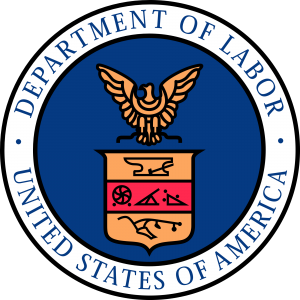 The Federal Department of Labor reports the use and abuse of drugs and alcohol in the workplace cause more than 65 percent of accidents in the workplace. Drug testing programs are a proven deterrent to combat drug and alcohol use in the workplace, helping companies reduce work related accidents, injuries and insurance claims as a result of said accidents. An effective drug policy also sends a clear message about the company’s commitment to a safe and healthy workforce.
The Federal Department of Labor reports the use and abuse of drugs and alcohol in the workplace cause more than 65 percent of accidents in the workplace. Drug testing programs are a proven deterrent to combat drug and alcohol use in the workplace, helping companies reduce work related accidents, injuries and insurance claims as a result of said accidents. An effective drug policy also sends a clear message about the company’s commitment to a safe and healthy workforce.
While many companies conduct pre-employment screening for drugs before hiring, they often neglect other important elements of an effective substance free workplace program. Tools such as random testing, reasonable suspicion, and post-accident testing provide a comprehensive program to insure the safety and well being of the workplace. In today’s article, we will address random testing.
Random Drug & Alcohol Testing
Random testing, if implemented and managed properly, is an effective deterrent of substance use and abuse by employees. Without a random testing program, the ability to identify potential issues before they become major problems or costly incidents is severely limited. The key to an effective random testing program all comes down to management and implementation of the program itself. While having a random testing program does not provide any ironclad guarantees, it does increase the likelihood of identifying employees with substance abuse issues and may deter substance users and abusers from applying in the first place.
Using the services of a neutral third party (often referred to as a Third Party Administrator or TPA) to manage the  program and selection process is a great option for companies. It protects the company from any claims of impropriety, discrimination or targeting by a disgruntled employee in that the company has absolutely no control over the process or actual selections. Companies like Carolina Drug & Alcohol Testing are TPAs that manage random testing programs for companies of all sizes and industries nationwide. Random selections are made via scientifically valid method through the use of computer based random number generators. Employee listings are managed and updated prior to the selections being generated and submitted to the company. Once the selections are received by the company representative or supervisor, they are then able to send employees for testing during the selection period designated.
program and selection process is a great option for companies. It protects the company from any claims of impropriety, discrimination or targeting by a disgruntled employee in that the company has absolutely no control over the process or actual selections. Companies like Carolina Drug & Alcohol Testing are TPAs that manage random testing programs for companies of all sizes and industries nationwide. Random selections are made via scientifically valid method through the use of computer based random number generators. Employee listings are managed and updated prior to the selections being generated and submitted to the company. Once the selections are received by the company representative or supervisor, they are then able to send employees for testing during the selection period designated.
A common mistake often found with companies that do random testing is that they announce the test ahead of time or give the employee days or even weeks to get the test done. This completely defeats the purpose of having a random testing program as it allows the employee time to attempt to flush their system, obtain adulterants or prepare to “cheat the test.” Random testing should always be done immediately upon notification. Notification of a random selection should only be given to the employee when the employee is able to immediately report to the collection site for the drug test. Collection sites can vary depending on the company and type of specimen being collected for the test.  Employees may be asked to report to a drug and alcohol testing clinic or there may be a collector that comes to the company to perform the collection on site.
Employees may be asked to report to a drug and alcohol testing clinic or there may be a collector that comes to the company to perform the collection on site.
Another common mistake made by supervisors and business owners is confusing random testing with reasonable suspicion testing which could open a company up to legal issues and liability. Random testing is just that – random. An employee is chosen randomly and sent for testing – not based on any suspicion, rumors or assumptions. Random selections must be made by scientifically valid method in order to avoid any liability on the part of the employer. If you have reason to believe an employee may be using or abusing drugs or alcohol, you may be able to send them for a “reasonable suspicion” test which we will discuss in our next article.
Education regarding drug and alcohol use and abuse is a critical part of any substance free workplace program; providing employees the information they need to know about the policy as well as the information needed to get help with current use or abuse issues. Employee education programs should provide company-specific information such as the details of the company’s policy. Education should also provide details regarding the nature of drug or alcohol addiction; its impact on work performance, health, and personal life. All employees should have access to this information and it should be available on an ongoing basis through a variety of methods.

siaosi says:
It would be nice to know that the employees are clean from alcohol. I would like to know how they do this testing. I want to make sure that everything is done correctly.
Carolina Testing - Drugs | Alcohol | DNA says:
Random alcohol testing for employees is ideal for determining if an employee is currently impaired on the job. For this reason, testing for alcohol impairment should only be done just prior to the employee starting their shift, during their shift or immediately following a shift. Breath alcohol testing using an approved Electronic Breath Test (EBT) unit is the preferred method of testing employees for alcohol impairment. Companies with a random testing program typically include a percentage of employees to be tested for alcohol in addition to the drug screen. For more information, feel free to contact us at 843-972-3287.